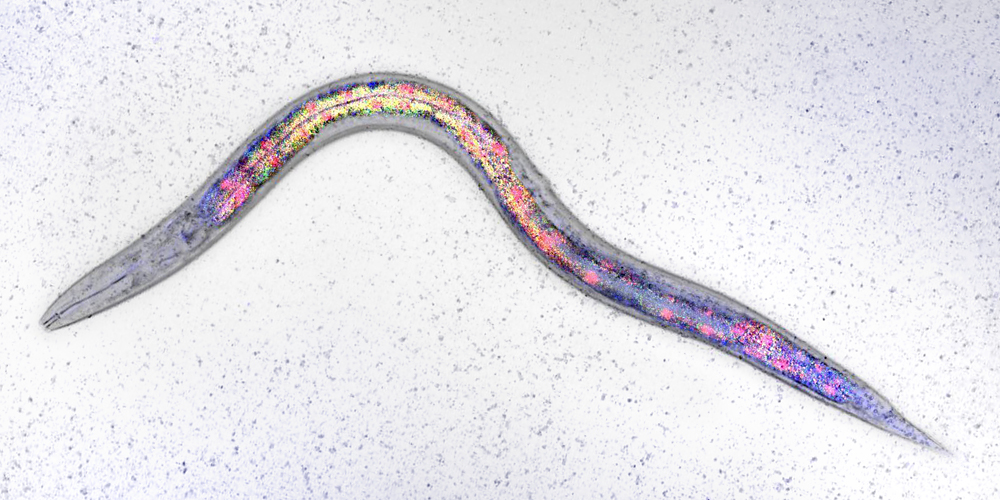Our cells continuously receive external signals, which are transmitted across the cell membrane into the cell, to be processed in the cell nucleus. Various signaling pathways are found in the cell membrane. One is the so-called Hedgehog signaling pathway which is particularly important in all multicellular organisms, including humans. In diseases such as cancer and diabetes, this signaling pathway is impaired. Professor Anne Spang’s research group at the Biozentrum of the University of Basel has now more closely studied the Hedgehog signaling pathway in the nematode C. elegans and further deciphered the role of the receptor Patched. Their findings have recently been published in “Nature Communications”.
Patched important for cholesterol transport
In their study, the researchers focused on the receptor Patched, which is located on the outer cell wall and is responsible for signal transduction. Their aim was to elucidate the function of Patched in cell signaling. They observed that worms with inactivated Patched receptor remain small and do not accumulate body fat.
When the nematodes with active Patched are provided with cholesterol-rich food, surplus cholesterol is normally transported back out of the cell. In worms, in which the receptor Patched is blocked, this cholesterol removal does not work anymore and consequently cholesterol accumulates in the cell. Thus, the research team was able to show that Patched is responsible for cholesterol export from the cell. However, it was still unclear why these worms did not accumulate any body fat.
Patched regulates lipid metabolism
The research team also found an answer to this: The increased concentration of cholesterol causes the smallest fat particles in the cell membrane, the lipids, to stiffen and so promote membrane rigidity. “Due to this stiffening, the cells can no longer form fat-storing lipid droplets”, says Anne Spang. “This means that the fat is not available to the cell. As a result, the whole organism lacks fat, which is an essential energy source. Under these conditions, the worm cannot accumulate body fat, and cannot survive in the long term.”
In worms that receive no additional cholesterol, the membrane remains flexible and lipid metabolism is unimpaired. The worms form normal lipid droplets in the cells and their organism can accumulate body fat. The worms grow to a normal size. “Thus the receptor Patched regulates not only the Hedgehog signaling pathway and the cell’s cholesterol level but also the lipid metabolism in the whole organism.”
New insights into the signaling pathway, cholesterol and lipid metabolism
The study provides not only a new understanding of the Hedgehog signaling pathway, but also demonstrates that the Patched receptor controls the cholesterol level and hence lipid metabolism in the cell. Cholesterol strongly influences membrane function and therefore its regulation by Patched has an all-round significance for the transportation in and out of the cell membrane. In the final consequence Patched effects the whole organism. Additionally, the interaction between cholesterol and fat metabolism makes clear how precisely the organism must regulate cholesterol to survive in the long term.
Original publication:
Carla E. Cadena del Castillo, J. Thomas Hannich, Andres Kaech, Hirohisa Chiyoda, Jonathan Brewer, Masamitsu Fukuyama, Nils J. Færgeman, Howard Riezman and Anne Spang. Patched regulates lipid homeostasis by controlling cellular cholesterol levels. Nature Communications; published online 12 August 2021
Contact: Communications, Heike Sacher



